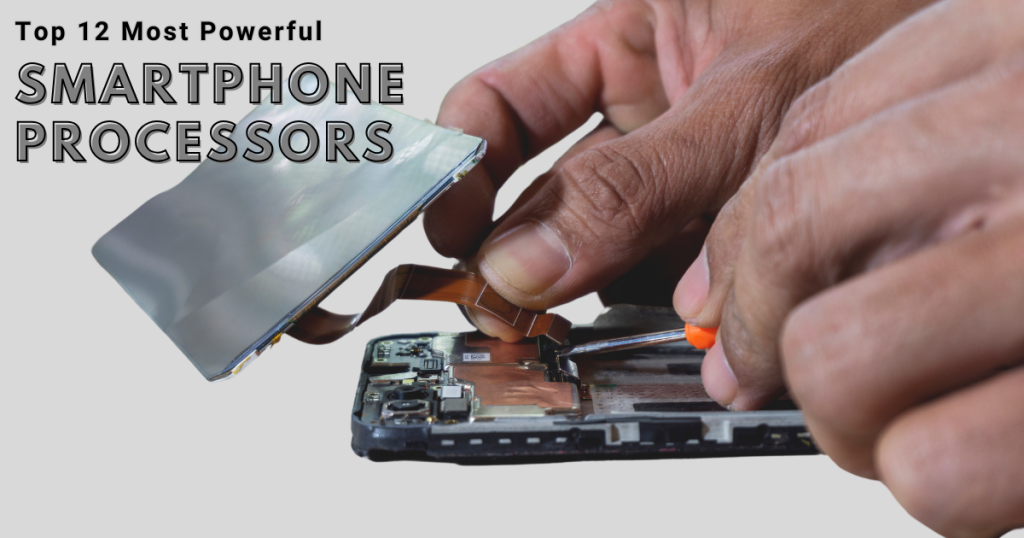Let’s be honest—we all love cool gadgets. They promise to make life easier, faster, or just a bit more fun. And in the age of online shopping, it’s easier than ever to get caught up in the excitement of a new tech toy or household helper. But what happens when the novelty wears off, and you’re left with a drawer full of stuff you never use? It’s something many of us are guilty of: spending money on things we thought we needed, but that turned out to be a complete waste of money.
This isn’t just about regretting one or two bad buys—it’s about recognizing a pattern. Marketers know exactly how to tempt us, especially with promises of efficiency, innovation, or “life-changing” features. The result? You might be surrounded by gadgets you don’t even realize are draining your wallet and offering very little in return. In this article, we’ll dig into 10 common gadgets many of us own that are actually a waste of money, and explain why it’s time to think twice before buying the next trendy device.
1. Electric Wine Openers – Cool Gimmick, But Totally Unnecessary
Electric wine openers often show up as a “must-have” gadget on gift guides and kitchen wish lists. They look sleek, make opening a bottle look futuristic, and promise ease, especially if you struggle with traditional corkscrews. But the reality? Most people use them a few times, then toss them into the back of a drawer.
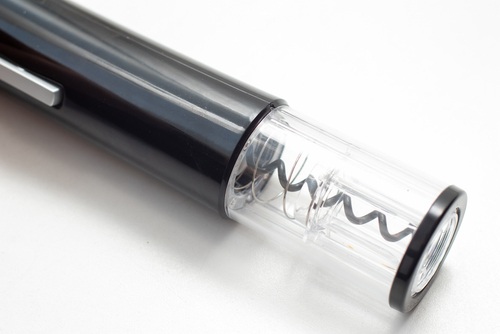
Here’s why they’re a waste of money:
-
Traditional corkscrews work just as well (and cost way less).
-
They’re slow compared to manual openers once the novelty wears off.
-
Batteries or charging? It’s just another thing to manage.
-
The motor can jam or break easily, especially with synthetic corks.
In 2025, even newer models with LED lights, foil cutters, and USB-C charging don’t add much practical value. And if you open wine only once in a while, it’s overkill. A simple waiter’s corkscrew (under $15) will do the job faster, cleaner, and won’t die halfway through opening your bottle.
- According to multiple lifestyle and consumer reports, electric wine openers are rarely worth the space they take up.
2. Single-Use Kitchen Gadgets – Space-Eaters That Just Collect Dust
Avocado slicers. Egg separators. Banana cutters. Strawberry hullers. Yes, these all exist—and yes, they all take up space in your kitchen drawer. At first glance, they seem like clever little time-savers. You see a quick demo video online and think, “That’s genius!” But in real life, they almost always end up in the back of a cabinet, forgotten after a couple of uses.
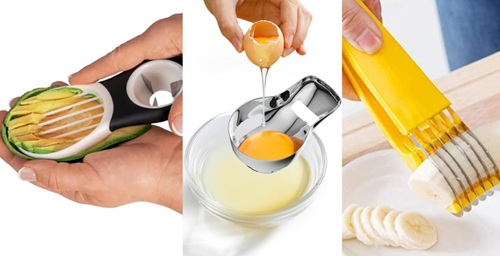
Why they’re a waste of money:
-
They only do one thing, and that one thing is often easy to do with a regular knife or spoon.
-
They take up space, especially in small kitchens.
-
They break or get lost easily, making them even more pointless.
-
Most people never cook with avocados or poached eggs that often.
Sure, a spiralizer might seem fun at first for zucchini noodles—but how often are you really spiraling veggies after week two? The same goes for apple corers, corn strippers, and mango slicers. Unless you’re prepping dozens of the same fruit or veggie every day, they’re more gimmick than game-changer.
What’s better? Invest in a good chef’s knife and a little practice. You’ll save money, space, and cleanup time.
- Many experts and chefs advise against unitaskers in the kitchen.
3. UV Phone Sanitizers – High-Tech Hype That Doesn’t Hold Up
UV phone sanitizers became super popular a few years ago, especially during the pandemic, and they’ve stuck around as trendy “must-have” hygiene gadgets. They claim to kill up to 99.9% of bacteria and viruses using ultraviolet light, usually in just a few minutes. Sounds like smart tech, right?
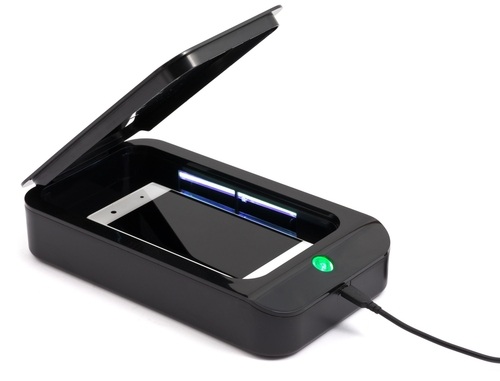
Not so fast.
Here’s why they’re more of a waste of money than a smart investment in 2025:
-
Your phone isn’t as germy as you think. Yes, it gets dirty—but so do your hands, which you wash regularly.
-
UV sanitizers only clean the surfaces they can reach. They can’t get into your phone’s charging port, speakers, or case crevices.
-
Alcohol wipes or simple soap-and-water cleaning (for cases) work just as well—and they’re much cheaper.
-
Many cheaper UV models don’t use strong enough UV-C light to actually kill pathogens.
On top of that, most people stop using them regularly after a few weeks. It becomes one more gadget cluttering up your desk or nightstand, especially when a disinfectant wipe can do the same job in seconds. Unless you’re in a medical environment or extremely hygiene-focused, a UV phone sanitizer is mostly a peace-of-mind purchase—not a practical necessity.
- Studies show inconsistent effectiveness in consumer-grade UV sanitizers, and experts often recommend sticking with traditional cleaning methods.
4. Bluetooth Shower Speakers – Fun at First, But Quickly Forgotten
Bluetooth shower speakers are one of those gadgets that seem like a great idea—music or podcasts while you shower? Sounds relaxing, right? But for most people, these gadgets end up being more hassle than help, and ultimately a waste of money.
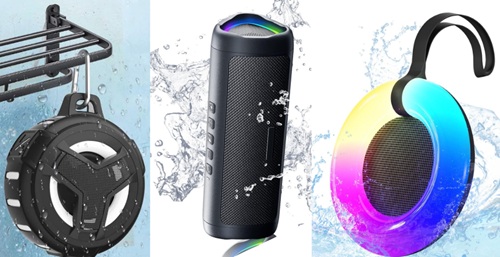
Here’s why they’re not worth the hype:
-
The sound quality is usually poor. Most waterproof speakers are tiny and tinny, and you can barely hear them over running water.
-
They need regular charging. And let’s be honest—who remembers to charge their shower speaker?
-
Touch controls are frustrating. With wet fingers and foggy mirrors, trying to change songs or volume mid-shampoo isn’t easy.
-
Many smartphones or smart speakers can play audio loud enough from outside the bathroom. You might not even need a separate device in the first place.
Some people also forget to dry or maintain them properly, which leads to mold build-up or battery damage. And while a few high-end models perform better, they’re often overpriced for something you’ll use only 10-15 minutes a day—if at all.
- Based on real user reviews and tech site comparisons, most budget Bluetooth shower speakers underperform and rarely get long-term use.
5. Smart Plugs (When Overused) – Convenience Turned Complication
Smart plugs can be incredibly useful when used right—they let you control lamps, coffee makers, or small appliances with your phone or voice assistant. But when you start adding them to every outlet in your home, things can get out of hand fast. In fact, overusing smart plugs is one of the sneakiest ways to waste money on gadgets you don’t actually need.

Here’s why going overboard with smart plugs can backfire:
-
Not everything needs to be “smart.” Adding a smart plug to a toaster, fan, or holiday lights might sound cool, but how often are you actually turning those on remotely?
-
Many cheaper smart plugs lose connection or lag. This leads to frustration and wasted time—exactly the opposite of what you bought them for.
-
Some devices don’t work well with smart plugs. For example, appliances with physical power buttons or timers (like microwaves or kettles) can’t be properly controlled.
-
Too many in use can cause cluttered apps and network slowdowns. Every plug needs setup, naming, and syncing, which adds up quickly if you have 10+.
One or two smart plugs used in the right spots—like for scheduling a lamp or turning off your curling iron—can be great. But using them in every room or for every small appliance? That quickly becomes more of a chore than a convenience, and a clear waste of money in the long run.
- Smart home experts recommend moderation with these devices to avoid clutter, technical headaches, and unnecessary spending.
6. High-End Fitness Trackers (If You Don’t Use the Data) – Fancy Features You’ll Probably Ignore
Buying a high-end fitness tracker can feel like you’re investing in your health. Brands like Garmin, WHOOP, or the Apple Watch Ultra promise advanced data on sleep, recovery, heart rate variability, stress, and VO₂ max. But here’s the catch: if you’re not actively using that data to change your lifestyle, it’s just expensive wrist candy.
![]()
Why it often becomes a waste of money:
-
Most people stop paying attention to the metrics after a few weeks. It’s easy to get excited by graphs and stats at first—but if you’re not using them to adjust your workouts, sleep habits, or diet, the value drops fast.
-
Free or lower-cost fitness trackers already cover the basics. Step count, calories burned, heart rate, and sleep tracking are available in budget devices under $50.
-
Subscription fatigue is real. Many high-end trackers now require a monthly fee (like WHOOP or Fitbit Premium) just to unlock full access to the data you already paid for.
-
They can cause unnecessary anxiety. Obsessing over heart rate zones or sleep scores every day can lead to burnout rather than better performance.
If you’re a dedicated athlete or serious about performance training, these tools can absolutely help. But if your workouts mostly include walking the dog or hitting the gym casually, spending $400+ on a device that you check once a week is a clear waste of money.
- Fitness and wellness experts frequently note that high-end trackers offer diminishing returns for casual users and encourage focusing on consistency over data.
7. Digital Photo Frames – Nostalgic Idea, Outdated Execution
Digital photo frames used to feel like the future. Just plug them in, load your favorite pictures, and voilà—your memories come to life on a screen. Fast forward to 2025, and most people barely use them, even after buying them with excitement. While they sound like a great way to keep family memories on display, they often turn out to be a quiet waste of money.
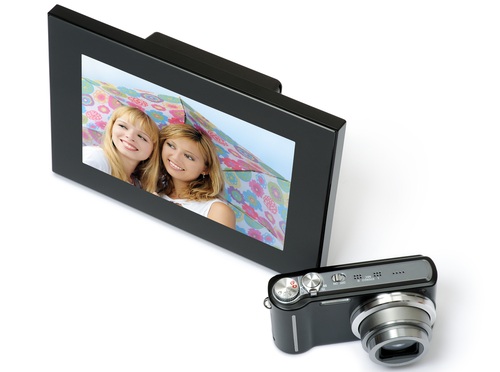
Here’s why they tend to disappoint:
-
Setup isn’t always simple. Many require an app, cloud account, Wi-Fi syncing, or even manual USB uploads—far more hassle than it seems.
-
The image quality often isn’t great. Cheaper models have dull colors or small screens that don’t do your photos justice.
-
They need to stay plugged in. That means more cords and limited placement options around your home.
-
You already have better alternatives. Smart TVs, tablets, or even smart speakers with screens (like Amazon Echo Show or Google Nest Hub) can do the same thing—and more.
Plus, after the novelty wears off, most people forget to update the photos, and the frame ends up looping the same few images over and over. Unless you’re gifting one to a tech-savvy grandparent who’ll use it, it’s another gadget that just sits around collecting dust.
- According to tech review sites and user feedback, digital photo frames are rarely used consistently and often lack value for the average buyer.
8. Mini Projectors – Fun for a Night, Forgotten for a Year
Mini projectors are often marketed as portable home theaters you can take anywhere—backyards, bedrooms, camping trips, or even hotel stays. They’re small, cute, and promise a big-screen experience without the cost of a TV. But in reality, they often end up being a waste of money after the initial excitement fades.
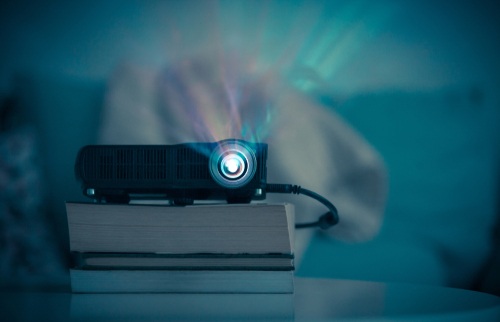
Here’s why they rarely live up to the hype:
-
Poor brightness and image quality. Most budget mini projectors don’t work well unless the room is completely dark. Even then, the resolution is usually fuzzy, and the colors washed out.
-
Built-in speakers are weak. You’ll likely need external speakers to hear clearly, which defeats the idea of it being a “simple” setup.
-
Limited compatibility. Not all models work seamlessly with Netflix, YouTube, or streaming sticks. Some even block major apps due to licensing restrictions.
-
Awkward setup and placement. You need the right distance, surface, and alignment to get a decent picture, which makes “quick and easy movie nights” more frustrating than fun.
While high-end projectors can offer a great experience, those cost hundreds (or thousands). The $50–$150 mini projectors that flood online marketplaces often overpromise and underdeliver. Most people use them once or twice, then stash them away and go back to watching movies on a laptop or TV.
- Numerous user reviews and product tests confirm that low-cost mini projectors generally fail to deliver a consistent, quality experience.
9. Smart Mugs (Like Temperature-Control Mugs) – A Pricey Sip of Convenience
Smart mugs, like the Ember Temperature Control Mug, promise to keep your coffee or tea at the perfect drinking temperature for hours. Sounds great, especially for people who sip slowly or get distracted during work. But for most people, the novelty wears off quickly—and the mug ends up being a very expensive regular cup.
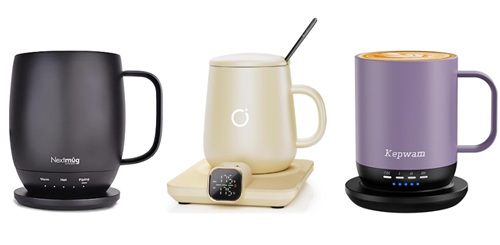
Why these are often a waste of money:
-
The price is steep. Most smart mugs range from $100 to $200, which is a lot to spend on a gadget that only holds a single drink.
-
You’re tethered to the charger. Once the battery dies (which happens within 1–2 hours on most models), you have to dock it back on its charging base.
-
Limited capacity. Many smart mugs are smaller than standard mugs, so you’re not even getting a full cup of coffee.
-
Basic insulated mugs do a similar job. A good-quality travel mug can keep drinks hot for hours—without needing Bluetooth, apps, or charging cables.
Sure, they look sleek and techy, and the idea of sipping perfectly warm coffee sounds appealing. But in everyday life, simply microwaving your drink or using an insulated tumbler is faster, easier, and cheaper. Unless you’re someone who obsesses over exact temperature and wants complete control from your phone, it’s likely to end up as a waste of money.
- Reviews from both tech experts and everyday users often mention that smart mugs feel overpriced for the limited benefit they provide.
10. Phone Camera Lens Attachments – Cool in Theory, Clunky in Practice
Phone camera lens attachments often seem like a cheap way to take your mobile photography to the next level. You’ll see promises of wide-angle shots, macro zoom, fisheye effects, and even “professional-grade” results—all from a tiny clip-on lens. But for most people, these accessories turn out to be more frustrating than functional, and a clear waste of money.
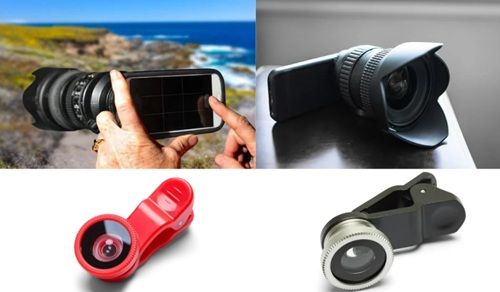
Here’s why:
-
They’re hard to align perfectly. Getting the lens to sit just right over your phone’s camera can take forever—and one slight bump throws everything off.
-
Image quality isn’t great. Most budget lens kits add noticeable distortion, blurriness, or color fringing to your photos. Instead of upgrading your shots, they often make them worse.
-
Modern phones already have great cameras. Newer iPhone, Samsung, and Pixel models include wide-angle, telephoto, and macro modes built-in—no extra gear needed.
-
They don’t fit all phone models. A lens that works on your current phone might not align with your next one, making it obsolete when you upgrade.
For under $30, they might seem like a fun impulse buy, but in reality, they usually end up lost in a drawer after one or two uses. If you’re serious about mobile photography, investing in editing apps or learning basic photo techniques will give you far better results than these often gimmicky add-ons.
- Tech reviewers consistently report poor real-world performance with low- to mid-range clip-on lenses, especially compared to the quality already built into modern phone camera.
Conclusion
It’s easy to fall for the hype. We see a gadget online, hear a friend rave about it, or watch a slick commercial, and suddenly it feels like a “must-have.” But in many cases, these gadgets end up collecting dust, sitting in drawers, or getting tossed during the next spring cleaning. The truth is, even small purchases can be a big waste of money when they don’t improve your daily life.
Before buying the next new tech toy, ask yourself: Will I use this often? Does it replace something I already own? Is there a simpler alternative? With a bit more thought, you can avoid the clutter, save money, and only spend on gadgets that make a difference. Stay smart, stay skeptical, and make every dollar count.




